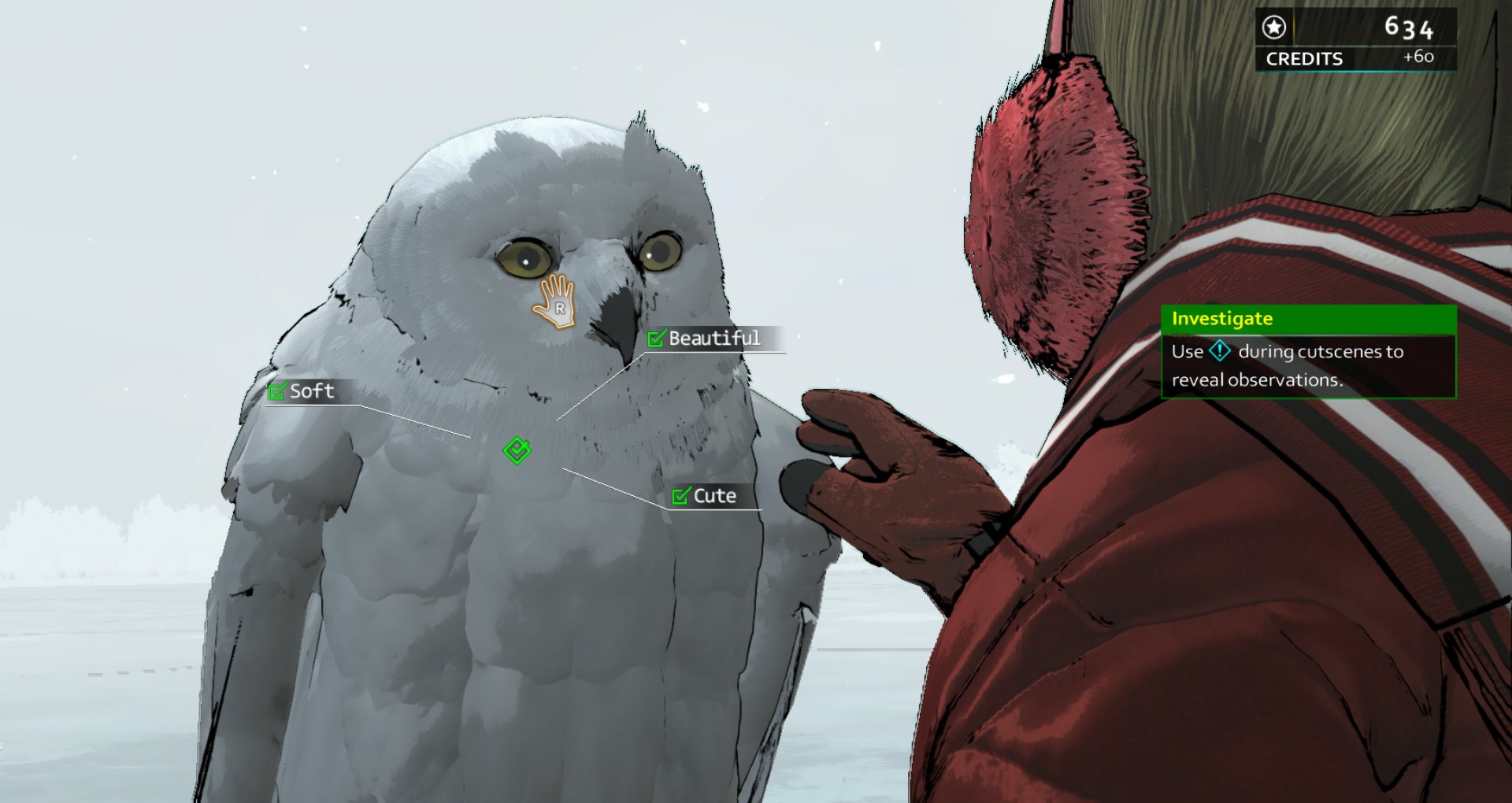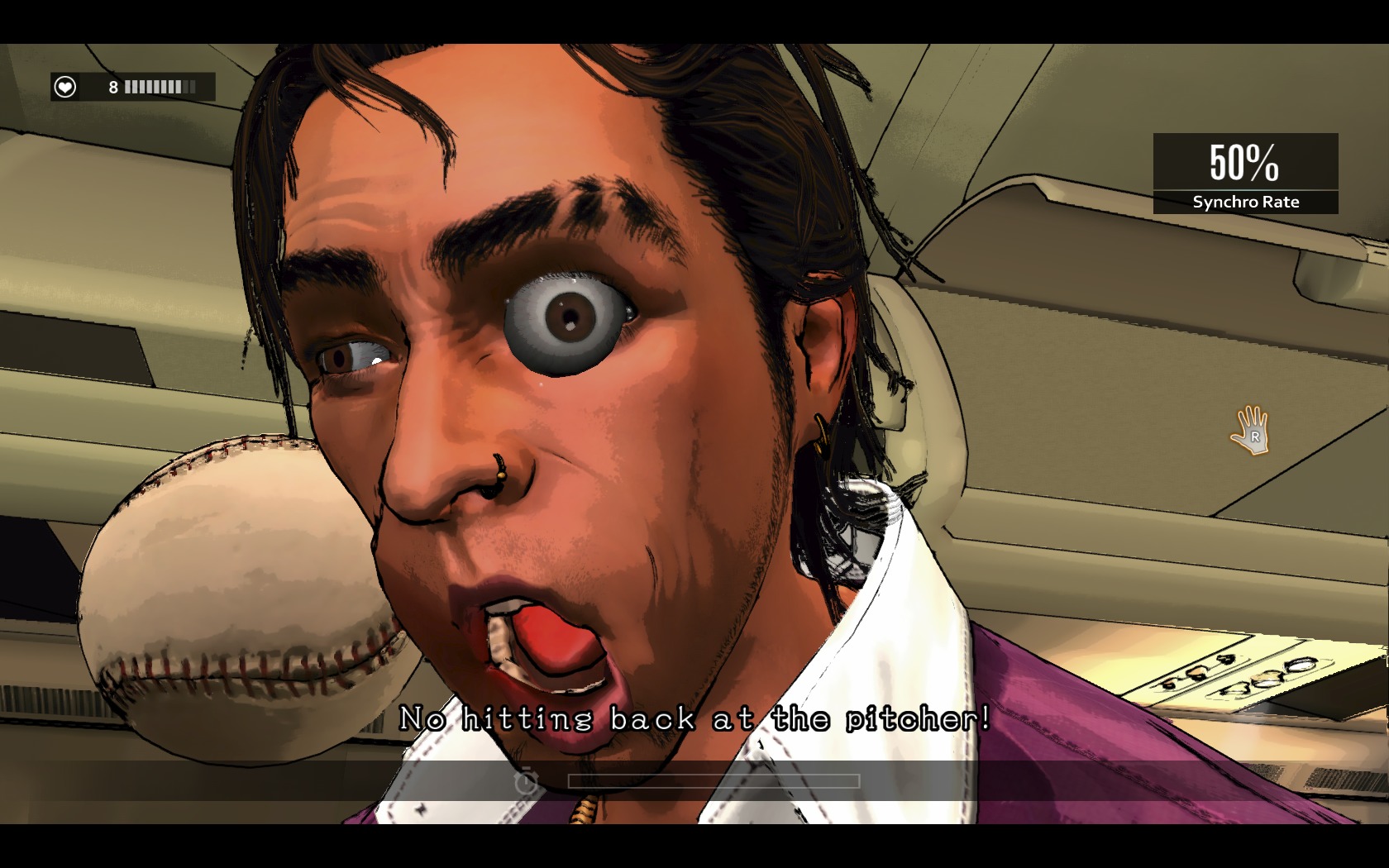Our Verdict
A strange, intangible experience, with style that transcends its own rubbishness.
PC Gamer's got your back
What is it: an interactive grab and push adventure
Influenced by: Telltale, David Lynch
Reviewed on: Core i5 2500K, Radeon HD6900, 8Gb RAM
Alternatively: Deadly Premonition
DRM: Steamworks
Price: $14.99
Release: Out now
Publisher: Microsoft Studios
Developer: Access Games
Website: d4-game.com
Multiplayer: No
You could call Dark Dreams Don’t Die a point and click adventure. I mean, you’re gonna be pointing at stuff. And you’ll click like a hero, using all three of the most popular mouse buttons. But point and click implies puzzles, and D4 trades only in mystery. D4 is better described as having all the subtlety and butch appeal of Alan Carr in an explosive ball gown, with all the interactivity of a toddler’s activity blanket. Does that description leave you none the wiser? Good. A bewildered, contented state of none-the-wiserliness is the best way to enjoy this espresso shot of eccentricity and cliché.
You play the role of David Young, a detective whose wife was murdered (cliché!), and now lives with what you’ll grow to suspect is a human manifestation of the family cat (eccentricity!). His wife’s last words were “look for D”, an ambiguous phrase that has led our hero, David, on an ongoing mission to meet and interrogate everyone whose name begins with D. Oh, he can also jump into the past by putting special objects on his head.
It’s a promising start. These special objects, “mementos”, are a great excuse to take the player anywhere. But first we have to deal with a prominent room-elephant. See, D4 was designed for use with Kinect. And for almost any other PC port, Kinect origins would be a death sentence. Kinect is less of a useful interface, and more of a way to turn menu screens into a sparring session with an invisible attacker. You can’t just port from Kinect like it’s no big thing.
It’s a sleepwalking world of semi-explained symbolism and visual comedy.
Don’t worry! D4 wasn’t a successful Kinect game. Even the limited interactions that you have with the world—grab, push, and look—were all better when controlled with a gamepad. Using a mouse may render the physical challenges trivial, but that’s an improvement. No-one needs a flailing exam.
This leaves you with little to do but enjoy the short ride. As you’d expect from Swery “Deadly Premonition” 65, it’s a sleepwalking world of semi-explained symbolism and visual comedy. And as a start-to-finish experience, it’s a mitigated success, and an utterly unique trip. Yes, the end comes with whiplash abruptness. Yes, some of the characters’ quirks turn into a test of patience. Yes, every aspect of the plot withers under unforgiving scrutiny. If you’re going to make me give qualifying yesses all day, maybe D4 isn’t for you. Here’s a test—if you can respond with a cheerful shrug to the next paragraph, get the game.
There aren’t many ways to lose. You’ve got stamina, depleted by pushing owls and drinking coffee. Low stamina means you’ll need to stop talking to eat some peanuts you found next to a suitcase, or buy some beans from the on-board cat with credits you earned by hovering your cursor over a mannequin’s hairstyle. I never came close to running out of stamina, which is a good thing. You want to enjoy this nonsense, not be undone by it.

Remember when I said D4 deals in mystery, not in puzzles? That may be overstating the complexity of the plot. You’ll guess the answers before Young manages it, and sleuthing is more Adam West’s Batman than Sherlock. The true mystery comes from the fact you’re stepping into an unashamedly strange world, which both revels in and subverts cliché. It’s unpredictable.
But this package cannot have been the intended scope of Season 1. It’s a splinter, leaving you with the itch of the incomplete. Who is Ronald, the cutlery-scraping wise giant who casually folds himself into a ventilation shaft while he’s talking to you? What is the nature of street drug Real Blood? Why is a man who openly resents me enthusiastically testing my aeronautical knowledge?
I’m perfectly happy not knowing the answers to these questions if that was the intention of the director. Nobody wants midichlorians killing the magic. But the cut-short nature of Season 1 means that any omission may or may not be deliberate, and that’s immensely frustrating. As far as endings go, it’s a comma, not an ellipsis. End a sentence with a comma, and it looks like you died at the keyboard before someone else walked in and clicked send.
Before I recommend D4 to you, you have to promise three things: don’t expect elegant “systems”. Be ready to enjoy camp over-acting. And don’t waste any time looking for new options in the main menu, when it ends with no ceremony. Expect to be entertained, but don’t expect satisfaction. Lower your demands, and enjoy jamming your tongue into Swery’s electric brain socket.
As for a score, that feels like I’m reviewing a tree, based on a fascinating, half-eaten leaf that blew into my face. I mean, great leaf, really. This leaf is to be encouraged. But as a failed experiment in episodic delivery, it must be punished, in the same way we’d all retrospectively give Half-Life’s Episode 2 42%, if we could, for the cruelty of that cliffhanger. Ah, what the hell. I’ve explained the problems in the words. I can be generous with the dumb number.

Not often you get to say “you have literally eye-popping balls”

I just assumed “stroke the frozen duck” was a euphemism

Have a nice think. David. Make sure you flush after.

Classic American domestic scenes #15
A strange, intangible experience, with style that transcends its own rubbishness.


